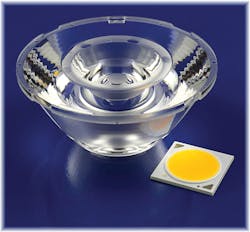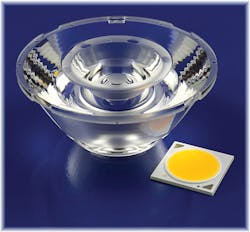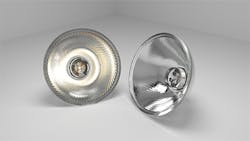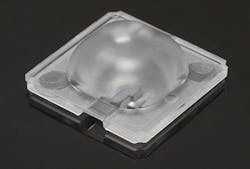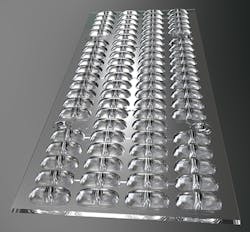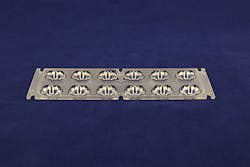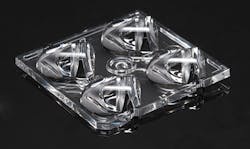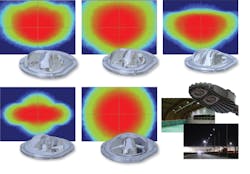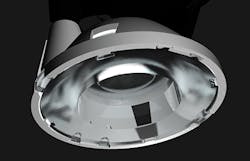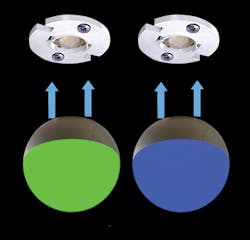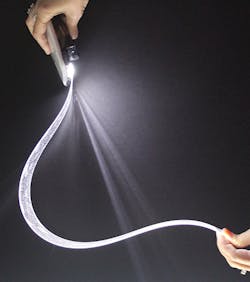Secondary and sometimes tertiary optics ultimately dictate the photometric performance of solid-state lighting (SSL) lamps and luminaires. LEDs deliver a relatively broad beam that requires shaping to place light where it's required in certain applications. For example, directional spotlights need a very narrow beam while street lights need to cover a broad area, perhaps with a rectangular pattern. To understand more about the ways optics can be applied, review our recent feature article on the topic. Indeed, lenses and reflectors can be used separately or together in advanced lamp and luminaire designs. Moreover, optical component designs must adapt to changes in the LED space - for example, in cases where the size of the light-emitting surface (LES) grows with the proliferation of chip-on-board (COB) LEDs. Let's review some of the latest product announcements from optics vendors, including quite a few products designed specifically for COB LEDs. — MAURY WRIGHT
